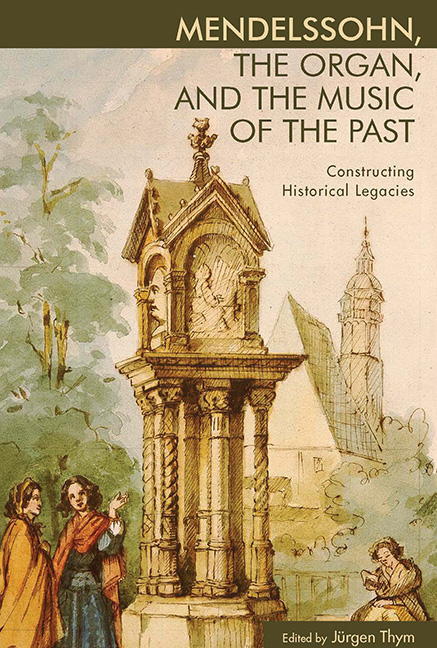35 results
Systematic observation of healthy eating environments in after-school services: a cross-sectional study
-
- Journal:
- Public Health Nutrition / Volume 24 / Issue 18 / December 2021
- Published online by Cambridge University Press:
- 05 August 2021, pp. 6067-6074
-
- Article
-
- You have access
- HTML
- Export citation
9 - A Life with Goethe: Wagner's Engagement with Faust in Music and in Words
- from Part II - Legacies: Goethe's Faust in the Nineteenth Century
-
-
- Book:
- Music in Goethe's <I>Faust</I>
- Published by:
- Boydell & Brewer
- Published online:
- 30 August 2017
- Print publication:
- 30 August 2017, pp 155-171
-
- Chapter
- Export citation
10 - Schubert hearing Don Giovanni: Mozartian death music in the ‘Unfinished’ Symphony
- from Part III - The late instrumental music (2): meaning and genre
-
-
- Book:
- Schubert's Late Music
- Published online:
- 05 April 2016
- Print publication:
- 07 April 2016, pp 193-218
-
- Chapter
- Export citation
Charles Rosen, Freedom and the Arts: Essays on Music and Literature (Cambridge MA: Harvard University Press2012). x + 438. pp. $35.00.
-
- Journal:
- Nineteenth-Century Music Review / Volume 12 / Issue 1 / June 2015
- Published online by Cambridge University Press:
- 17 June 2015, pp. 141-147
-
- Article
- Export citation
10 - Mendelssohn's “Authentic” Handel in Context: German Approaches to Translation and Art and Architectural Restoration in the Early Nineteenth Century
- from Part Three - Mendelssohn's Inherited Legacies in Context
-
-
- Book:
- Mendelssohn, the Organ, and the Music of the Past
- Published by:
- Boydell & Brewer
- Published online:
- 14 March 2018
- Print publication:
- 15 November 2014, pp 264-286
-
- Chapter
- Export citation
Index
-
- Book:
- Mendelssohn, the Organ, and the Music of the Past
- Published by:
- Boydell & Brewer
- Published online:
- 14 March 2018
- Print publication:
- 15 November 2014, pp 333-339
-
- Chapter
- Export citation
Part Two - Mendelssohn and the Organ
-
- Book:
- Mendelssohn, the Organ, and the Music of the Past
- Published by:
- Boydell & Brewer
- Published online:
- 14 March 2018
- Print publication:
- 15 November 2014, pp 89-90
-
- Chapter
- Export citation
Part One - Composition and Tradition
-
- Book:
- Mendelssohn, the Organ, and the Music of the Past
- Published by:
- Boydell & Brewer
- Published online:
- 14 March 2018
- Print publication:
- 15 November 2014, pp 13-14
-
- Chapter
- Export citation
Dedication
-
- Book:
- Mendelssohn, the Organ, and the Music of the Past
- Published by:
- Boydell & Brewer
- Published online:
- 14 March 2018
- Print publication:
- 15 November 2014, pp v-vi
-
- Chapter
- Export citation
Contents
-
- Book:
- Mendelssohn, the Organ, and the Music of the Past
- Published by:
- Boydell & Brewer
- Published online:
- 14 March 2018
- Print publication:
- 15 November 2014, pp vii-viii
-
- Chapter
- Export citation
Part Three - Mendelssohn's Inherited Legacies in Context
-
- Book:
- Mendelssohn, the Organ, and the Music of the Past
- Published by:
- Boydell & Brewer
- Published online:
- 14 March 2018
- Print publication:
- 15 November 2014, pp 211-212
-
- Chapter
- Export citation

Mendelssohn, the Organ, and the Music of the Past
- Constructing Historical Legacies
-
- Published by:
- Boydell & Brewer
- Published online:
- 14 March 2018
- Print publication:
- 15 November 2014
Acknowledgments
-
- Book:
- Mendelssohn, the Organ, and the Music of the Past
- Published by:
- Boydell & Brewer
- Published online:
- 14 March 2018
- Print publication:
- 15 November 2014, pp ix-x
-
- Chapter
- Export citation
List of Contributors
-
- Book:
- Mendelssohn, the Organ, and the Music of the Past
- Published by:
- Boydell & Brewer
- Published online:
- 14 March 2018
- Print publication:
- 15 November 2014, pp 327-332
-
- Chapter
- Export citation
Frontmatter
-
- Book:
- Mendelssohn, the Organ, and the Music of the Past
- Published by:
- Boydell & Brewer
- Published online:
- 14 March 2018
- Print publication:
- 15 November 2014, pp i-iv
-
- Chapter
- Export citation
Factors in the Assessment of Suicidality in Youth
-
- Journal:
- CNS Spectrums / Volume 12 / Issue 2 / February 2007
- Published online by Cambridge University Press:
- 07 November 2014, pp. 156-162
-
- Article
- Export citation
Contributors
-
-
- Book:
- A Concise Guide to Understanding Suicide
- Published online:
- 05 October 2014
- Print publication:
- 18 September 2014, pp vii-x
-
- Chapter
- Export citation
DDT RESIDUES IN ROBINS AND EARTHWORMS ASSOCIATED WITH CONTAMINATED FOREST SOILS1
-
- Journal:
- The Canadian Entomologist / Volume 102 / Issue 9 / September 1970
- Published online by Cambridge University Press:
- 31 May 2012, pp. 1122-1130
-
- Article
- Export citation
9 - Parsifal: redemption and Kunstreligion
- from PART II - Opera, music, drama
-
-
- Book:
- The Cambridge Companion to Wagner
- Published online:
- 28 September 2011
- Print publication:
- 11 September 2008, pp 151-176
-
- Chapter
- Export citation
SVEN HIEMKE LUDWIG VAN BEETHOVEN: MISSA SOLEMNIS Kassel: Bärenreiter, 2003 pp. 203, ISBN 3761815166
-
- Journal:
- Eighteenth-Century Music / Volume 2 / Issue 2 / September 2005
- Published online by Cambridge University Press:
- 21 October 2005, pp. 335-337
- Print publication:
- September 2005
-
- Article
-
- You have access
- Export citation



